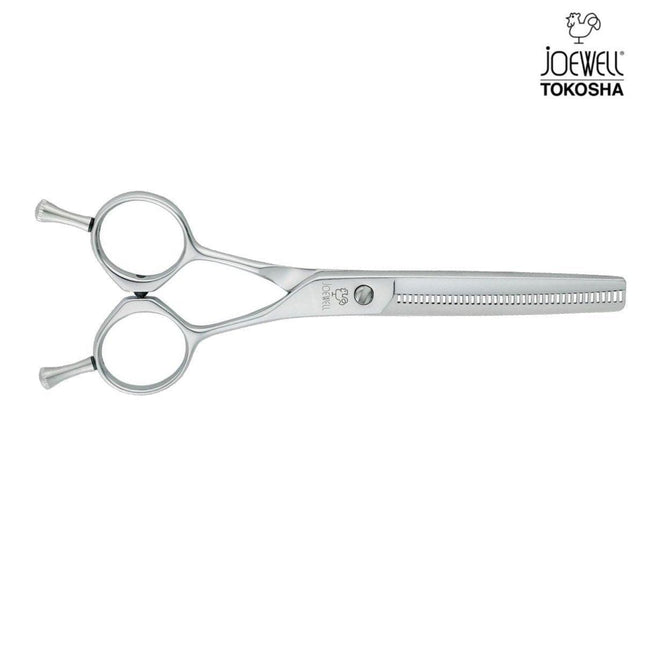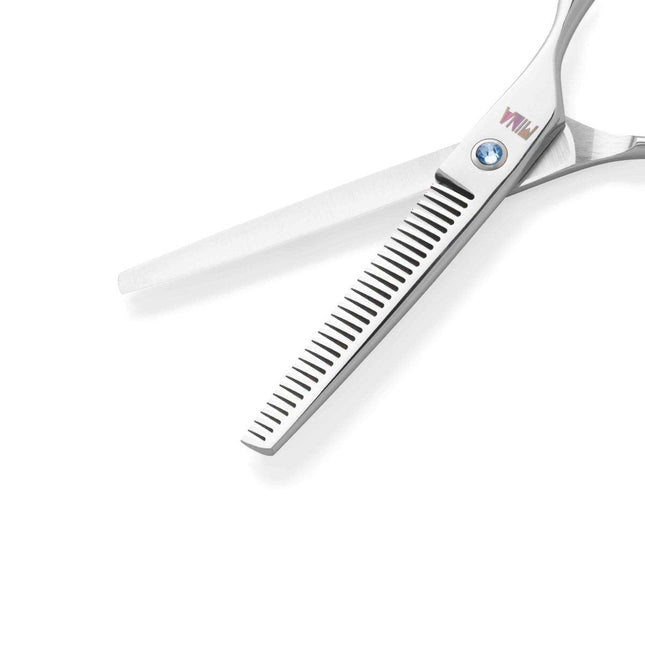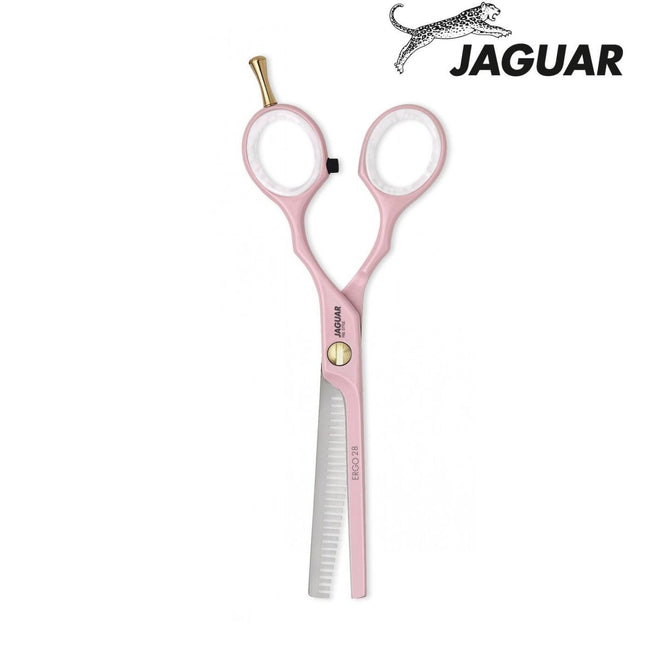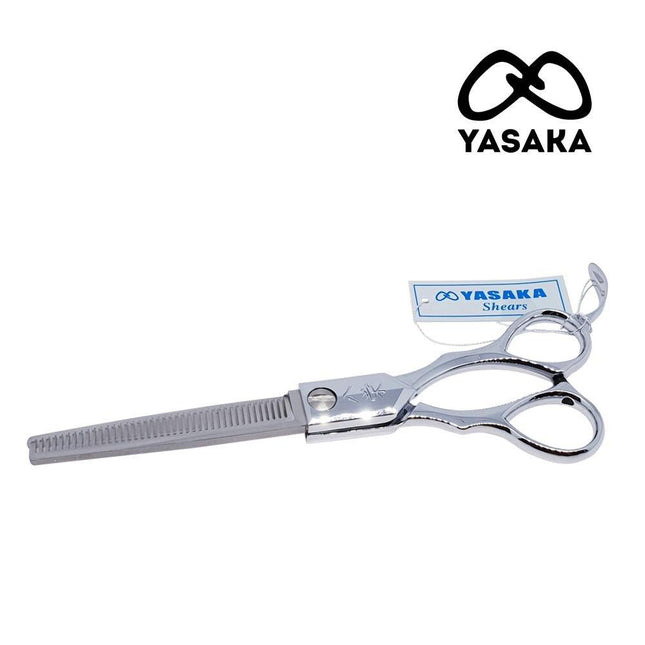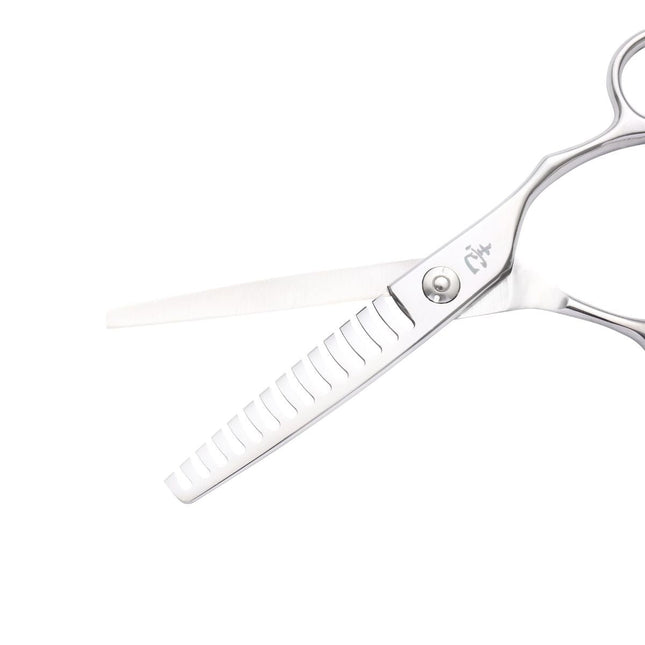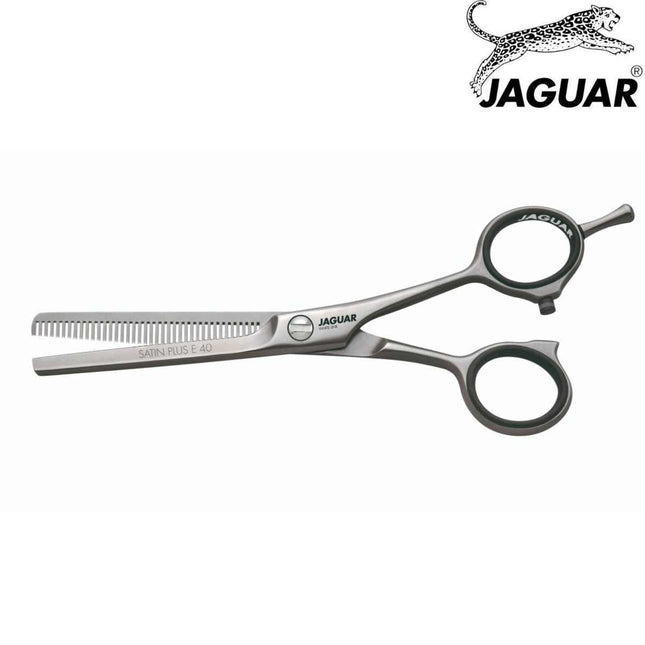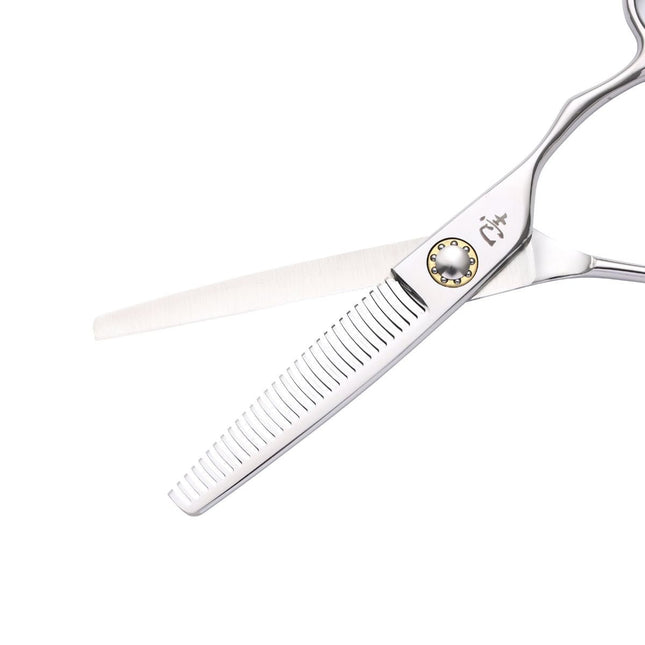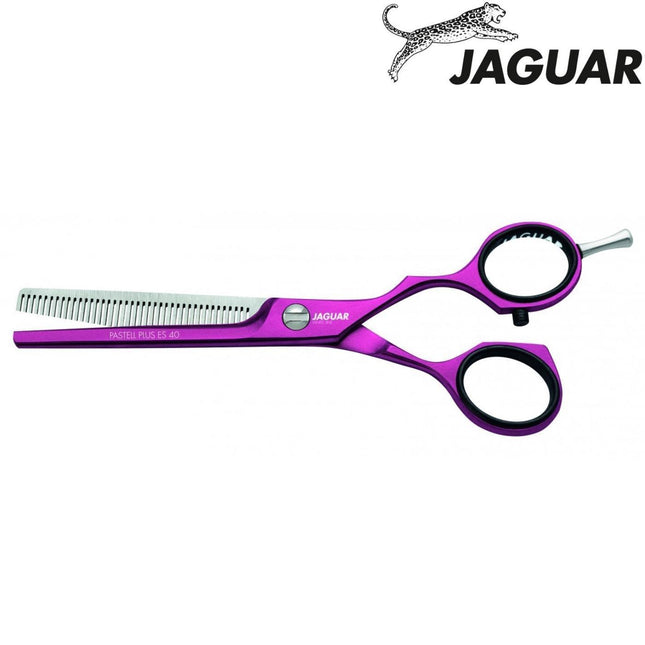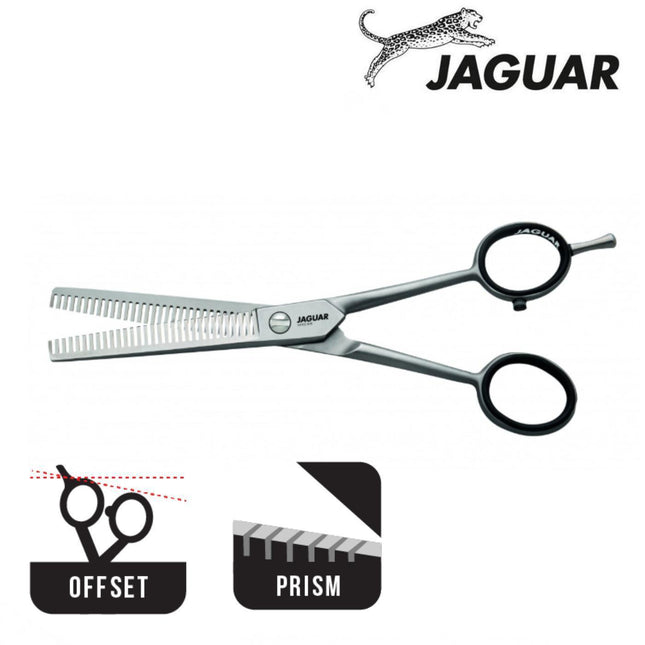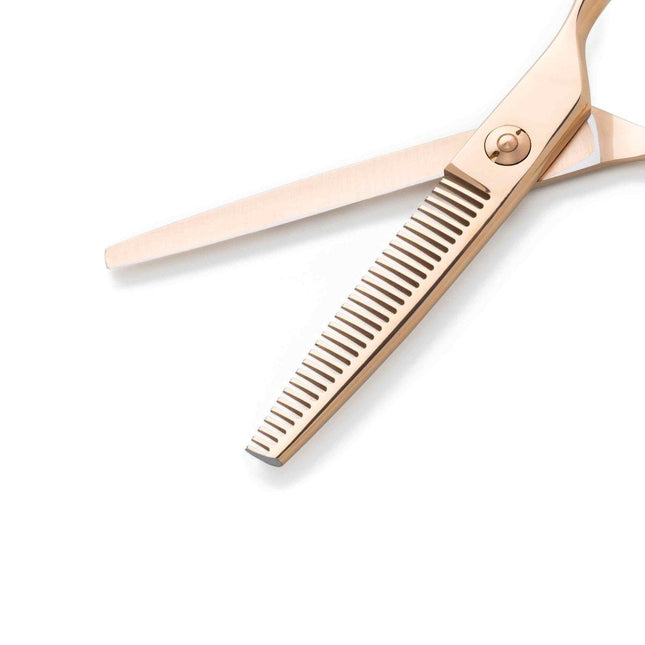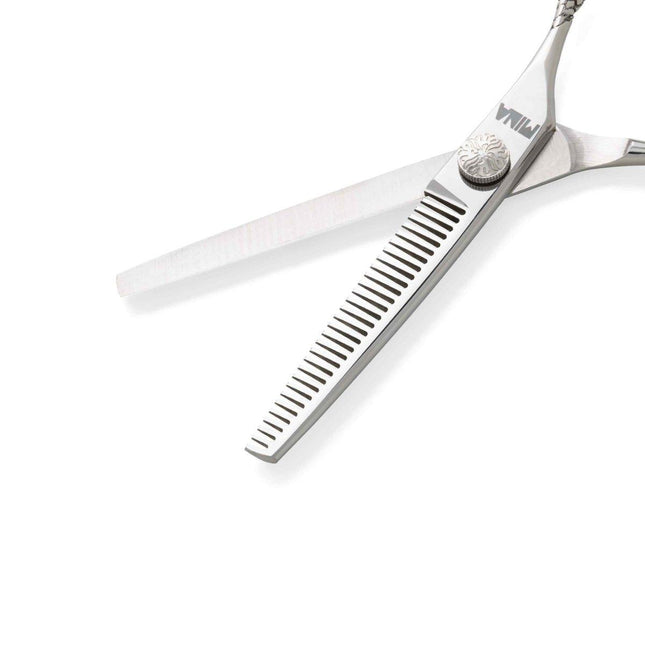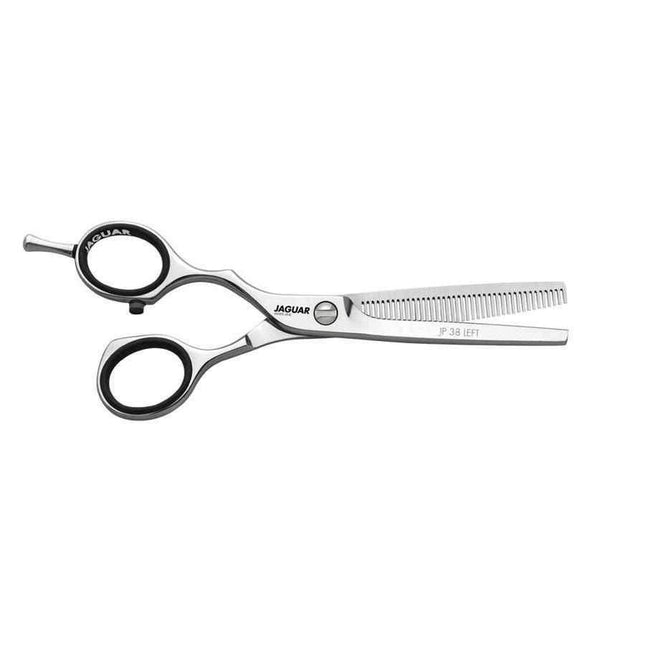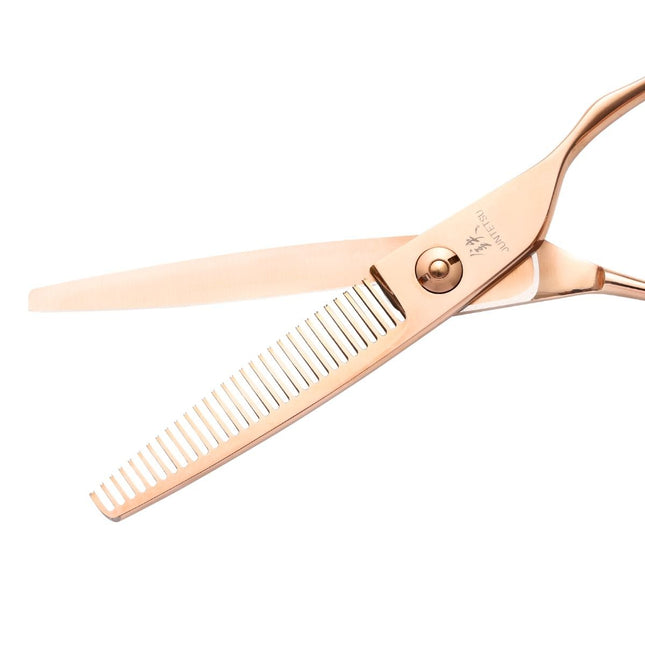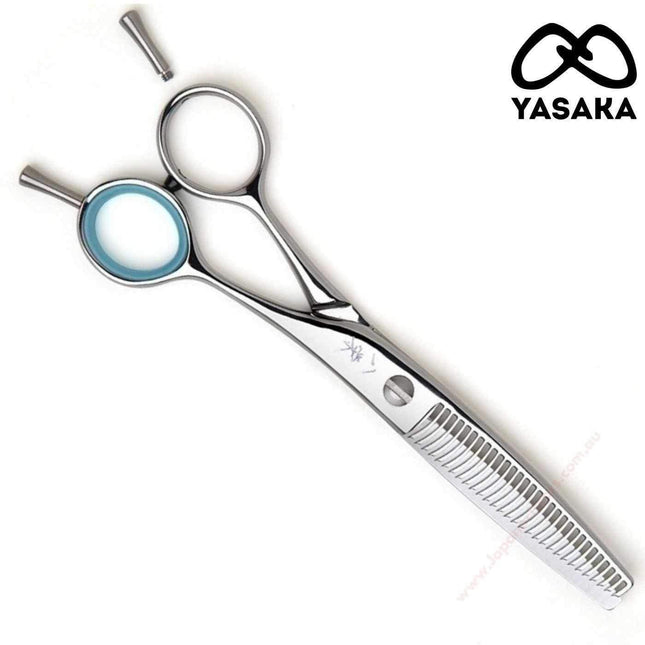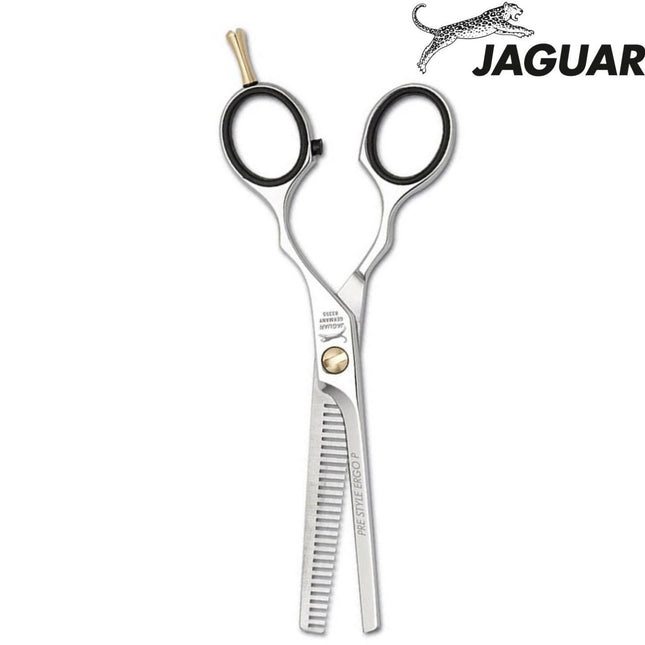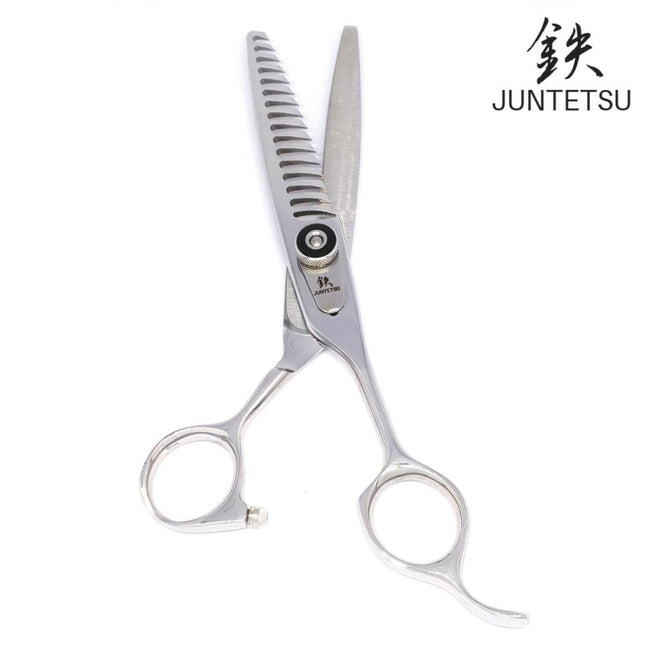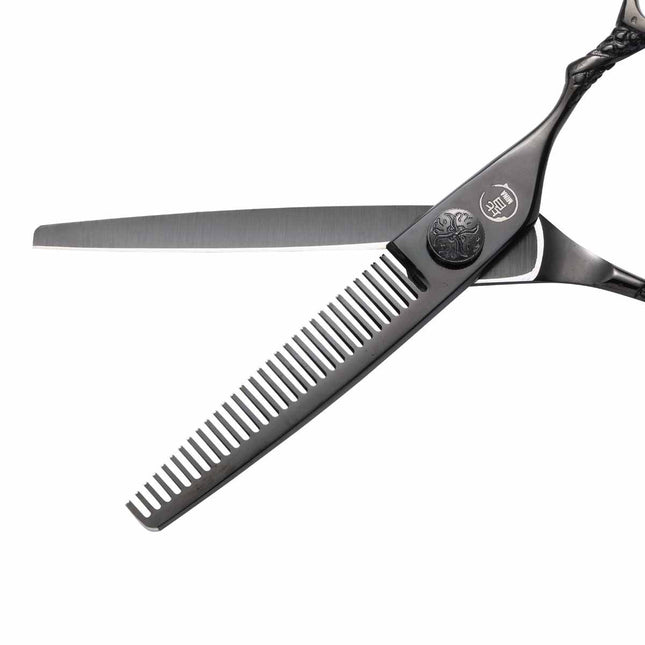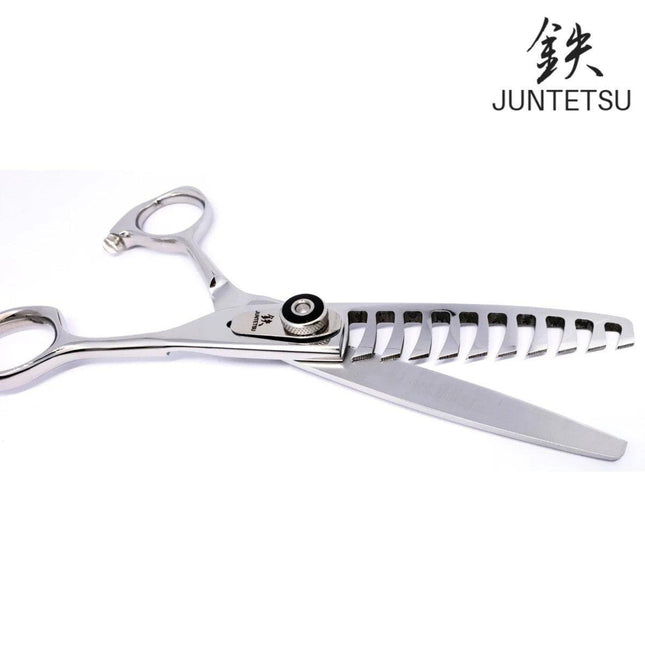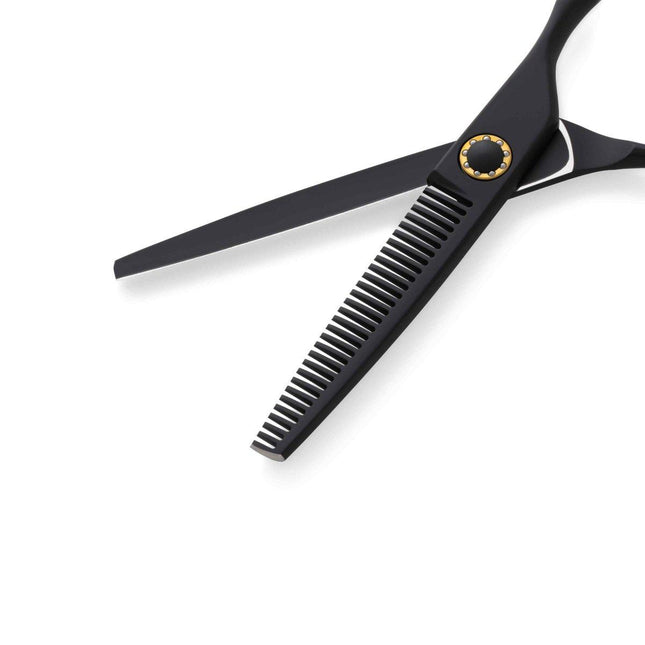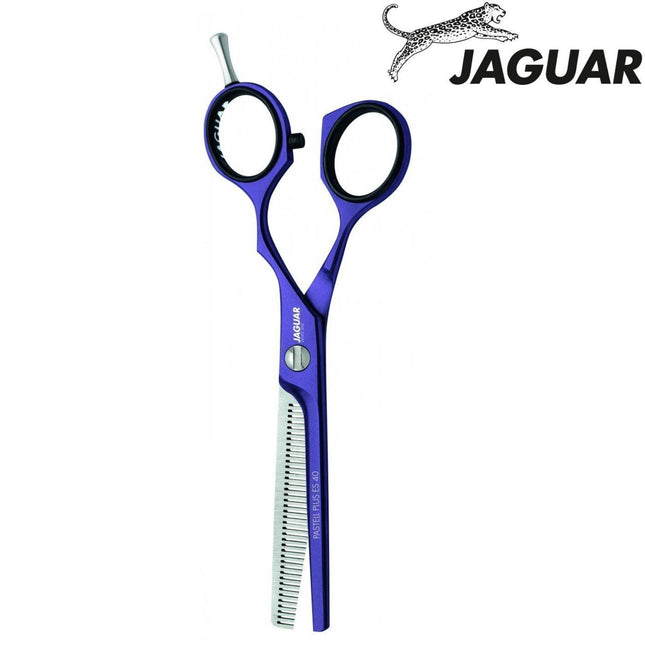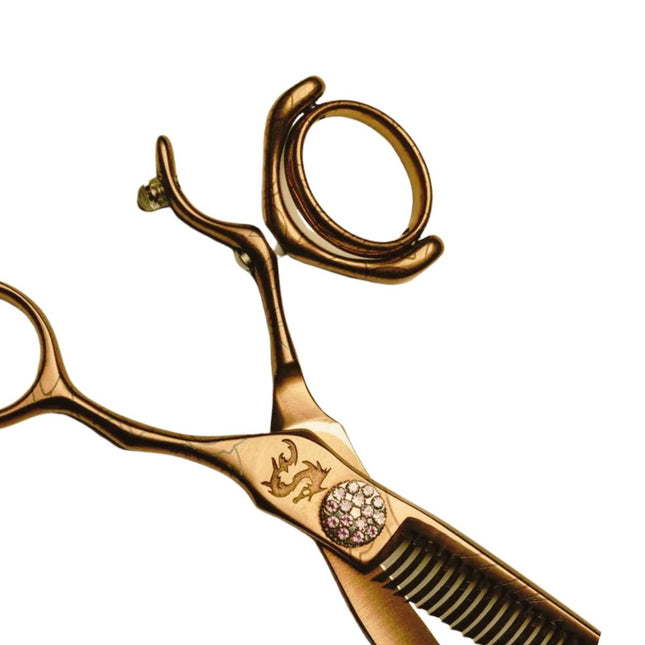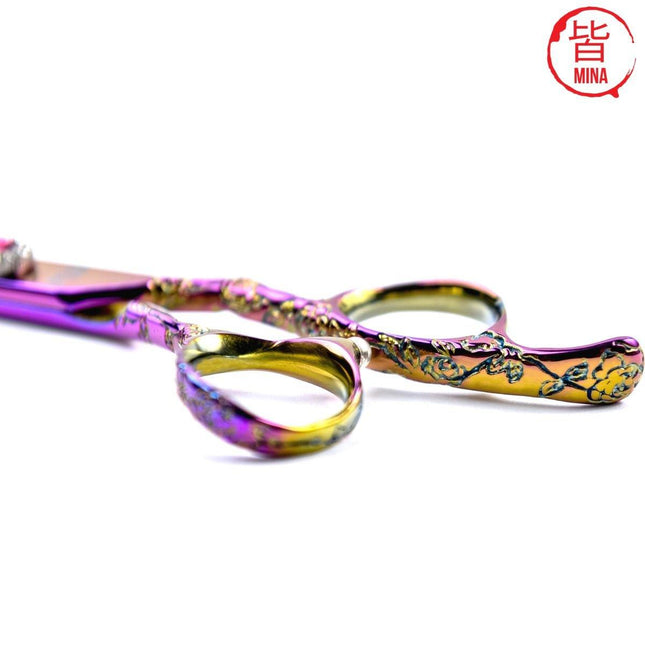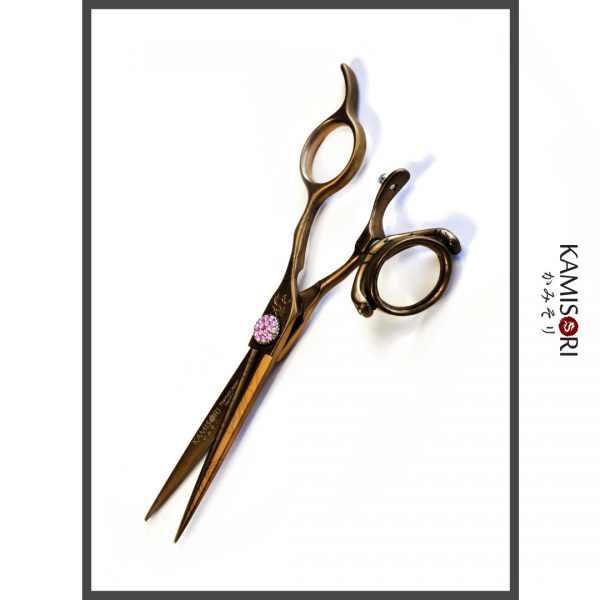Professional Thinning Scissors quick guide.
Discover the perfect blend of style, comfort, and performance with our range of professional thinning scissors. Crafted from premium grade Japanese or German steel, our thinning shears are meticulously designed by industry professionals. We import authentic and renowned brands like Juntetsu, Jaguar, and Yasaka.
Our hairdressing and barber thinning scissors are precision tools for creating a range of modern, textured, or layered hairstyles. With durability and precision at their core, they ensure a clean and consistent cut for any layering effect.
Ergonomically Designed for Comfort
Each pair of our thinning scissors features ergonomic handle designs, ranging from crane handles to offset. These designs ensure maximum comfort and control, making them your reliable companion throughout the day.
Learn More: The Complete Thinning Scissor Guide
What Are Thinning Scissors?
Thinning and texturizing shears are a vital tool in every stylist's kit. They have sharp teeth on one blade and a normal cutting edge on the other. These shears are primarily used to thin out thick and curly hair, giving it a lighter and more manageable look.
They are also very useful for removing bulk and weight from the hair, making it more manageable and easier to style.
What Are The Different Types Of Thinning Scissors?
Thinning scissors come in many shapes and sizes, but they all have one common purpose - to reduce the thickness of the hair without altering the overall length or shape of the hairstyle.
Here are some of the different types of thinning scissors you can find:
- Regular Thinning Scissors: These have evenly spaced teeth on one blade and a straight edge on the other. They are ideal for removing bulk from thick hair, and they typically remove about 50-60% of the hair with each cut.
- Chunking Shears: These have wider spaced teeth and are used to remove more hair with each cut. They are ideal for very thick or curly hair.
- Texturizing Shears: These have more teeth than regular thinning scissors, and they only remove a small amount of hair with each cut. They are used to add texture and volume to the hair.
- Finessing Shears: These have very fine teeth and they only remove a very small amount of hair. They are used to add the finishing touches to a haircut, and to blend the cut hair with the rest of the hair.
| Tool | Type | Teeth Count | Usage |
|---|---|---|---|
| Thinning Scissors | Texturising and Blending | 20 to 30 teeth | Used for texturising and blending, providing a softer look without altering the hair's length or shape |
| Thinning Scissors | Removing Bulk | 6 to 12 & 30 to 40 teeth | Used for reducing the thickness and bulk of hair, best used on dry hair to accurately observe the hair's natural position |
| Thinning Scissors | Blending and Finishing | 14 to 20 teeth | Used for blending and creating a seamless finish, these scissors contribute to a professional, polished look |
| Finishing Shears | Finishing | 15 to 22 teeth | Used to provide a soft finish on the ends, creating an airy movement in "heavy" hair |
| Texturising Shears | Texturising | 25 or more teeth | Used to add texture and movement, these shears can make the hair appear more dynamic and voluminous |
| Chunking Texturising Shears | Chunking | 7 to 15 teeth | Used to take out unwanted bulk, their wider teeth can drastically change the hair's volume and texture |
When choosing the right type of thinning scissors, it's important to consider the type of hair you will be working with, as well as the desired result.
How To Use Thinning Scissors
Thinning scissors can be a great tool to have in your hairdressing arsenal, but they need to be used correctly to get the best results. Here are some tips on how to use thinning scissors:
- Always start with clean, dry hair. This will give you the best results and will make it easier to see what you're doing.
- Decide where you want to thin the hair. You should only use thinning scissors on the areas where the hair is too thick or heavy.
- Hold the thinning scissors at a 45-degree angle to the hair. This will ensure that you remove the right amount of hair with each cut.
- Start at the mid-lengths of the hair and work your way down to the ends. Never use thinning scissors near the roots of the hair, as this can cause damage and breakage.
- Take your time and work in small sections. This will give you more control and will help to prevent mistakes.
Remember, it's always better to remove a little bit of hair at a time and then check the results. You can always cut more, but you can't put it back once it's been cut!
How To Care For Your Thinning Scissors
Like all hairdressing tools, thinning scissors need to be cared for properly to ensure they stay in good condition and continue to give you the best results. Here are some tips on how to care for your thinning scissors:
- Clean them regularly: After each use, wipe the blades clean with a soft, dry cloth to remove any hair or product residue.
- Oil them regularly: Apply a few drops of scissor oil to the blades and the pivot area of the scissors once a week. This will keep them lubricated and will help to prevent rust and corrosion.
- Store them correctly: When not in use, store your thinning scissors in a dry, clean place. Avoid storing them in humid or damp areas, as this can cause rust and corrosion.
- Sharpen them regularly: Over time, the blades of your thinning scissors can become dull, which can make them less effective and can damage the hair. Have them sharpened by a professional at least once a year to keep them in top condition.
With proper care and maintenance, your thinning scissors can last for many years and continue to give you excellent results.



